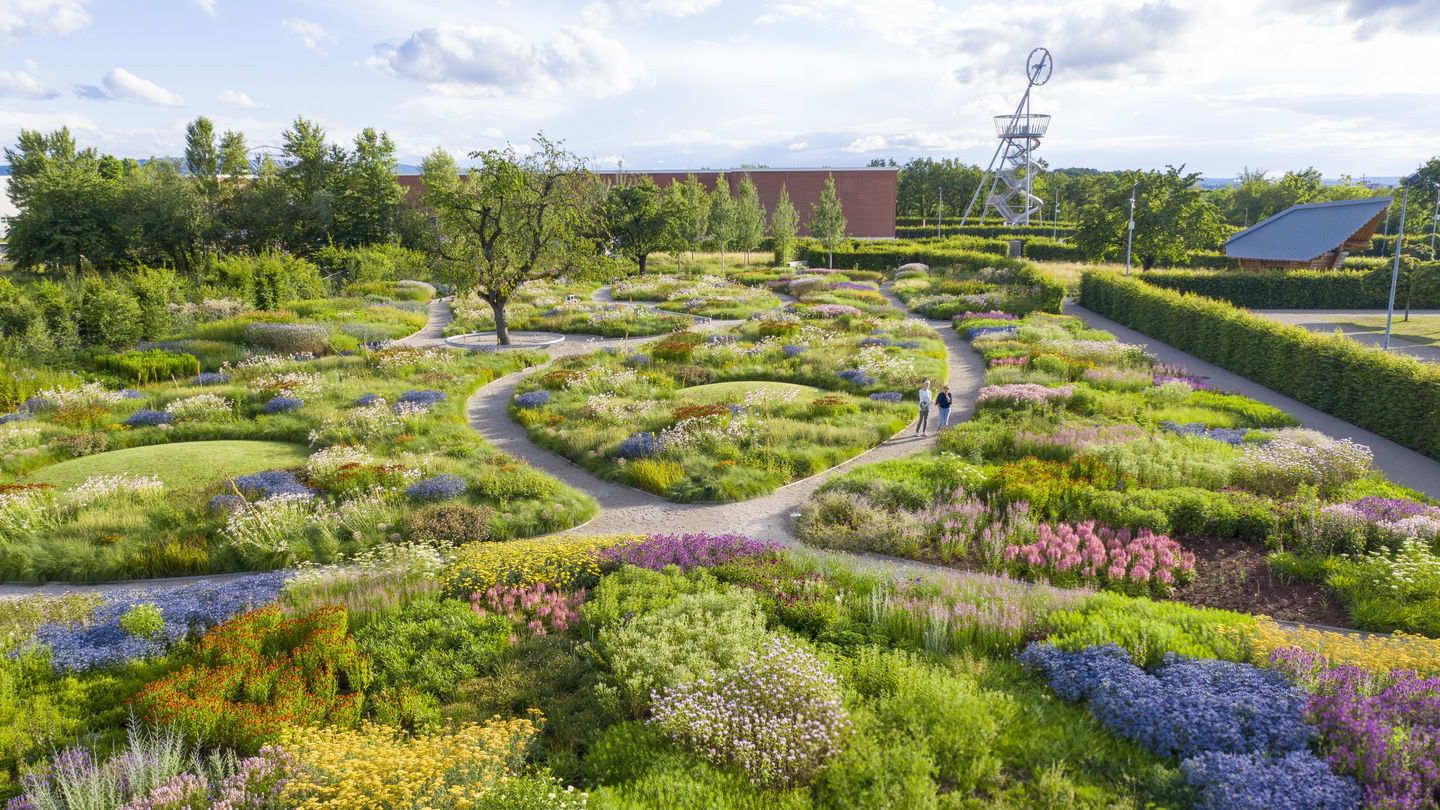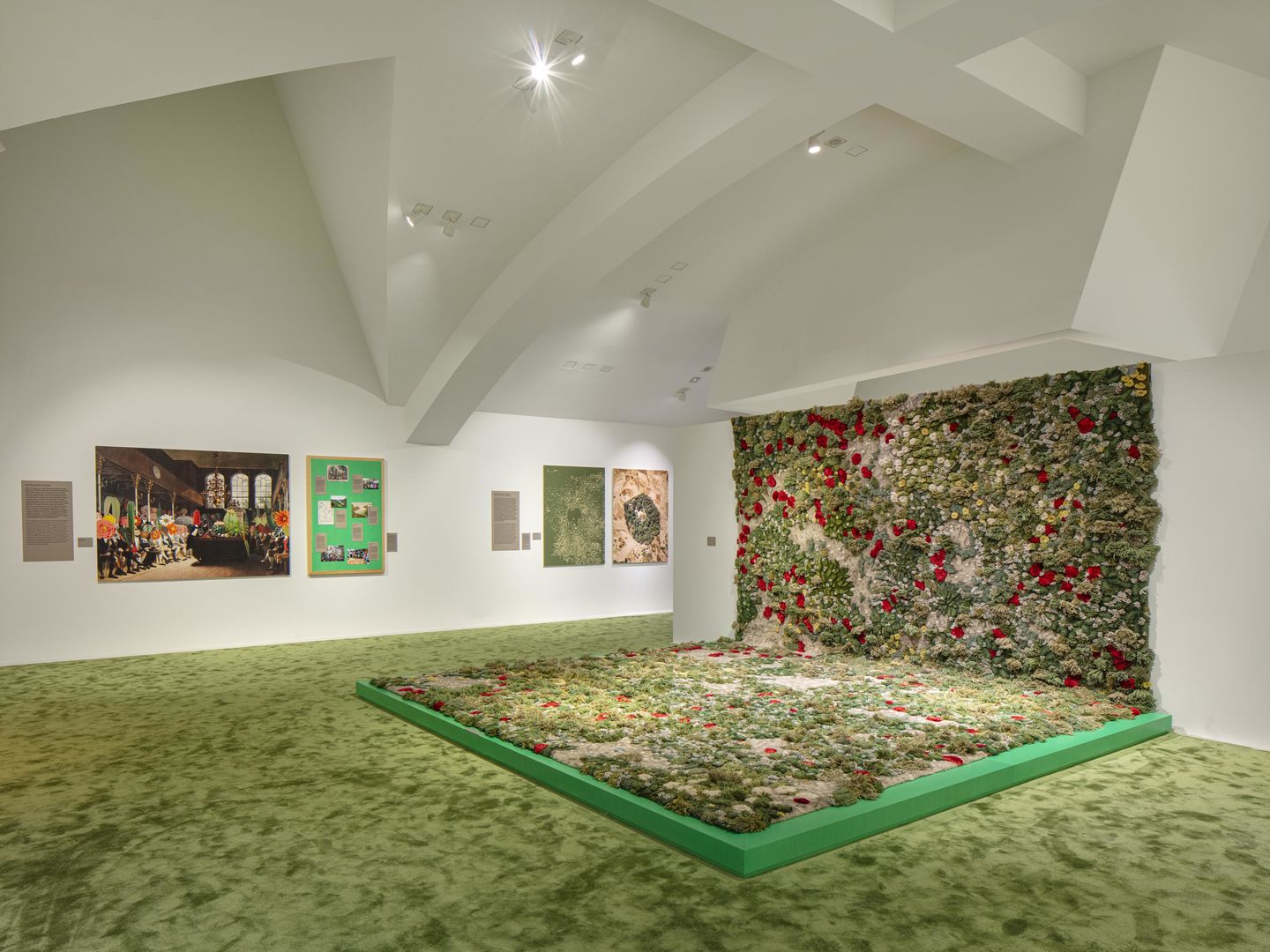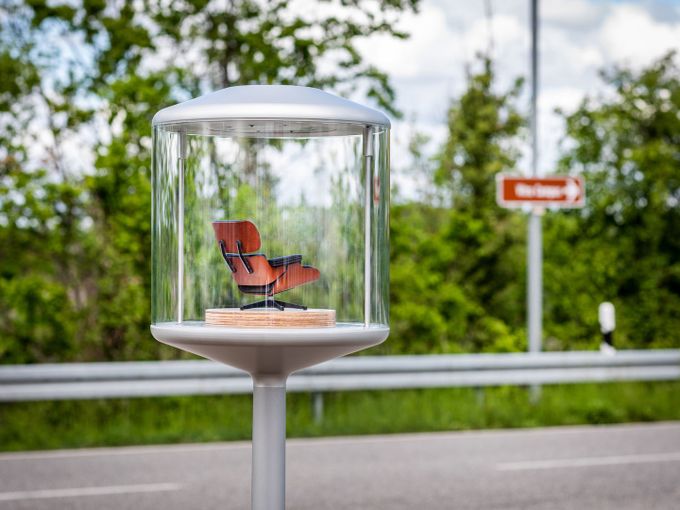The Garden is an interface between people and nature
A conversation with curator Viviane Stappmanns
The current exhibition ‘Garden Futures: Designing with Nature’ at the Vitra Design Museum explores the past, present and future of gardens and garden design. Viviane Stappmanns explains in an interview why gardens are highly political domains. Stappmanns, who curated the exhibition together with Nina Steinmüller, Marten Kuijpers and Maria Heinrich, explained: ‘Design and architecture can learn a lot from gardening.’
What did you learn in the course of your research for the ‘Garden Futures’ exhibition?
A garden is always shaped by people and its layout and design reveal much about how individuals and society as a whole relate to nature. This can be observed in very different cultures throughout the ages. Sometimes garden design creates a highly manicured and controlled form of nature. Sometimes it is meant to give the impression of not being controlled at all, but is still carefully conceived nonetheless. Whatever their appearance, gardens have always been a projection of the future. Anyone creating a garden believes in the hope and promise of a better future. Today, many people wonder how to best respond to the needs of nature and protect the natural environment. Indigenous societies have a long history of shaping nature without destroying it. We are looking for this co-existence today, whether on a small scale with succulents in the living room or plants on the balcony or on a large scale through comprehensive urban planning.
Why is a design museum showing an exhibition about gardens?
The short explanation: any intervention in nature and its various forms can be understood as design. This makes gardens the ideal subject when it comes to examining how we construct our relationship with nature. There is a second, quite pragmatic reason behind our decision to look at gardens and that is the Oudolf Garten on the Vitra Campus. It was inaugurated in June 2020 during the pandemic. Visitors to the garden have been highly moved by the experience, which prompted us to think more intensively about gardens. It quickly became clear to us what a big topic this is – the garden as a point of interface between people and nature.
The exhibition can also be seen as a negation of paradise, because it presents many critical perspectives on gardening and garden design and addresses pressing issues such as colonialism, extinction of species and the climate crisis.
Even if we often think of the garden as a private paradise, gardens are highly political realms. For example, there is the question of privilege. Who gets to have a garden, who is entitled? This is echoed in the themes of the garden city, allotment gardens or guerrilla gardening. The artist and landscape architect Barbara Stauffacher-Solomon once said: ‘The rich own gardens, the poor work in them.’ For the broader society beyond the aristocracy, having a garden of one’s own as a private retreat is only a phenomenon of the last 200 years.
What can design learn from gardening?
Design and architecture want to achieve a result, a perfect product. In times of ecological and social crises – in which design and architecture have each played a contributing role – a change in thinking is needed. Brian Eno once said: ‘Think like a gardener, not an architect: design beginnings, not endings.’ Gardening is always about doing things bit by bit. Not finding the perfect solution, but reacting and trying things out in small ways. That is the first thing design can learn. And the second, of course, is to be economical with resources. If I fail to nourish my soil properly, I won’t get a decent harvest. This direct relationship of give and take has yet to be established in design and architecture.

An exhibition of the Vitra Design Museum, the Wüstenrot Foundation and the Nieuwe Instituut, Rotterdam
Until 3 October 2023 at the Vitra Design Museum, after which the exhibition will be shown at Design Museum Helsinki and the Museum of Finnish Architecture (10 November 2023 to 31 March 2024), at Vandalorum in Värnamo (27 April to 13 October 2024), at Nieuwe Instituut in Rotterdam (November 2024 to March 2025) and at V&A Dundee (April to December 2025).Publication date: 23.6.2023
Author: Jasmin Jouhar
Images: 1. Derek Jarman, Prospect Cottage, Dungeness, Kent, UK, ab 1986, photo: Howard Sooley, 1993; 2. Friedrich August Krubsacius, Design for an unknown garden, 1760 © SLUB Dresden / Deutsche Fotothek, Germany; 3. Vitra; 4. »Garden Futures: Designing with Nature« © Vitra Design Museum, photo: Ludger Paffrath; 5.-6: »Garden Futures: Designing with Nature« © Vitra Design Museum, photo: Ludger Paffrath;

